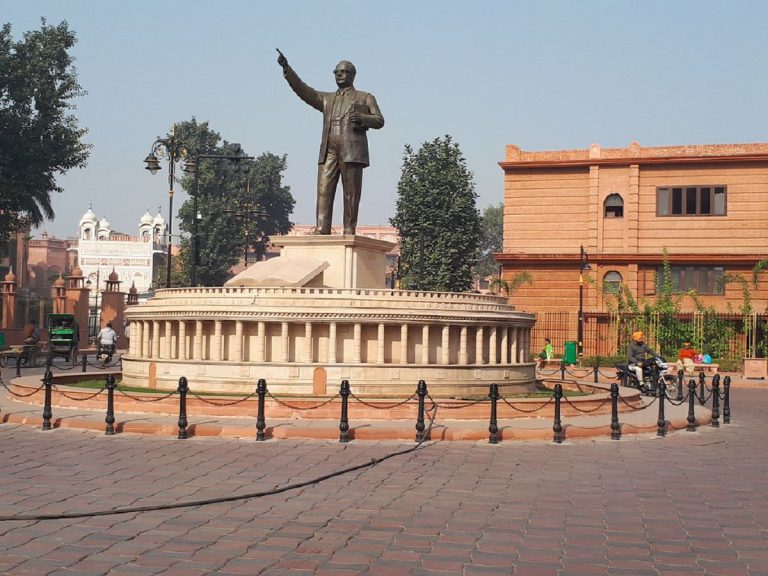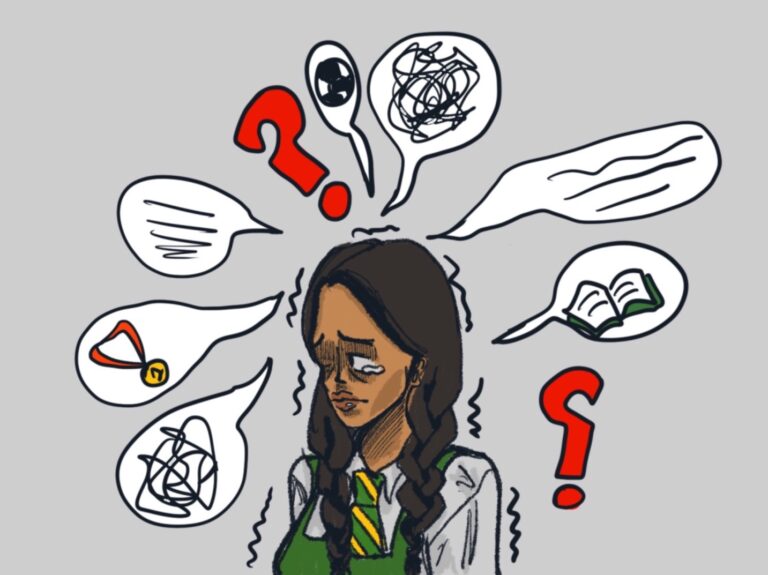Reviving the Handicraft in India

Aparajita is currently doing her PhD in Visual Arts, Arts and Aesthetics at JNU. She is a trained archaeologist and has participated in exacavations at Rakhigarhi,Haryana and Odhisa. Her main area of interest is study of Ancient Indian history and culture.
The diverse landscape of our country has supported different forms of art and crafts. Each region in India has its own diverse culture, which has given rise to distinct cultural traditions. The Patachitra of Odisha, vibrant lacquer work from Rajasthan and the elaborate Bidri craft of Karnataka. All represent distinct cultural traditions of India. The handicraft sector is the second largest and is next to agriculture in creating employment and livelihood opportunities in rural India. It is the largest decentralized and unorganised sector. Mahatma Gandhi through his articles in Young India expressed his anguish on the plight of handicrafts and the lack of attention paid on the indigenous industry. Globalization has further helped us open the borders of many nations. This has provided easy access to foreign fashion brands and traditions. This has further side-lined the traditional arts. While, there is no harm in imbibing something new but at the same time it is important to conserve indigenous arts.
Diminishing Handicrafts
Crafts like Mithila paintings, Roghan painting, Dhokra craft Parsi & Toda embroidery are endangered. Even the traditional art of puppetry, handicrafts of Assam and Nagaland are dying out slowly. The art forms like Kasut practised in North Karnataka also on the verge of dwindling. A similar fate is shared by Patan Patola, an art form practiced in Kutch. One of the main reasons for the diminishing traditional arts in the post-independence period was the colonial apathy which largely promoted the foreign made goods in India.
These machine-made goods were cheaper than the handicrafts which largely caused the doom of the tradition. The years of side stepping of handicrafts, created a scarcity and lack of goods. The tradition was largely side-lined and in the post-independence it became increasingly difficult to accommodate them in the mainstream. The raw material necessary for the production increases the cost of production and makes the final product very costly. Further, even after finding a necessary market we notice that there is a great exploitation of the artists who are exploited by middle men who take away all the profit. The artists are kept in lurch and subsequently paid less. These factors have often stunted the growth of traditional crafts.
Reviving the Lost Tradition
Under the Corporate Social Responsibility Act, 2013 provisions have been made to promote traditional arts and handicrafts. The item (v) under Schedule VII of the Companies Act, 2013 act mentions that companies should provide required respite to support the revival of traditional arts in India. Although, reiterated on paper, in reality it is a herculean task to achieve as it requires humongous efforts. Only corporate engagement is not sufficient to revive the dying sector. This would require sustained collective efforts. A fruitful step in this direction will be if one can provide patronage to artisans and products. To face the over increasing competition outside it is crucial to expose the artisans towards self-reliant and sustainable practices.
Educating customers is an integral part of revitalizing the traditional handicraft industry. Companies can support by conducting workshops for prospective customers, existing employees and school children. These helps increase awareness about various art forms and also, artisans can understand customers’ expectations and can accordingly adapt to changing markets. A proper way to revive the handicraft industry is to understand the global market. Further, they need to interact more with the customers. The market can benefit if it looks at it as arena for women’s employment. Companies by using their marketing strategies can promote these traditions. There needs to be a proper collaboration among designers and artisans.
Some of the NGO like Happy Hand Foundation, recently launched an online store to sell products made by artisans. The Tata supported Tribal Cultural Centre promotes tribal handicrafts and tools. Delhi Hat, formed by Jaya Jaitley was formulated with the idea of providing a unified platform for artists across India to showcase their talent.
Today, we see that there is a rising tendency among designers who are increasingly using indigenous sources to decorate apartments. The handwoven fabrics are excellent pieces to decorate parts of interiors. They can be used as cushion covers, table runners and wall art. The warli print is a huge hit for fabrics. Terracotta warli designed posts are used to give a design. The technique of filigiri and the art of making brass statues are widely used to make decorative pieces for home. The traditional art of painting like kalighati, kalamkari, thantha can provide unique wall piece ideas.
Bamboo art is regaining importance as lamps made out of bamboo. Bamboo pots are also finding place in the interior. Using such ingredients not only gives home an aesthetic look but also sustains the art. Traditional art forms can be customised to meet today’s needs and choices. This serves the dual purpose of preserving the craft and at the same time traditional art can feature as exotic murals on walls.
Government and Handicraft Sector
The Government over the years has come up with many schemes to revive the sector. It has launched the Mega Cluster Scheme, which follows a mega cluster-based approach in scaling up infrastructural and production chains at handicraft centres which have remained unorganised and have not kept up with modernisation and other developments. The objective of the scheme is to generate employment and improve the living standards of existing artisans. The mega clusters will be taken up for development through the Handicrafts Mega Cluster Mission (HMCM).
The Marketing support and services scheme is launched to provide platforms for artisans. It further guaranteed financial assistance for organising or participating in marketing events in India. Besides this, craft awareness and demonstration programmes are also conducted. Financial assistance is provided for organising or participating in marketing events abroad, market studies, craft exposure programmes, cultural exchange programmes, etc. There is also assistance provided for compliance, social, and welfare needs for artisans.
Government has also introduced schemes like “Handloom Mark” which helps in authenticating the handwoven material. It is further used to provide an identity for Indian material. Government organizes special Expos, Craft Melas, Urban Haats. It also gives National Awards and National Merit Certificates to weavers and artisans. Seminars are also held with professional designers and marketing consultants. There is a Credit Guarantee Scheme which provides loans to artisans via Scheduled Commercial Banks, Cooperative Banks and Regional Rural Banks. But, this is fraught with many issues. Many a times, these banks do not have branches in remote rural areas, particularly in North East and J&K. Even where a bank branch is available, the needy people are unaware of the schemes. They’ve to go through lengthy paperwork and repeated trips to the bank-office, to get the loan money. This is specially inconvenient for those living in remote areas. Despite certain administrative challenges, the government has taken active steps in reviving the lost traditions.
Through various social media sites, individual and collective efforts, NGO’s have been continually working in this direction which has made traditional arts more visible in public domain. Today, we notice that popular fashion has been influenced with traditional arts. The youth today is increasingly moving towards traditional arts. There is a whole lot of surge of social media influencers who have positively contributed in this direction wherein today owing a handicraft is considered to be a thing of vogue. While probing deeper we can understand that most of these art forms are a means to understand our own culture. They connect us with our roots; the use of symbolic elements in the art forms just adds more layer to its meaning. Most of the traditional artists consider their art as a form of worship. In this case, aiding them in their endeavour becomes our undeniable duty.
Featured Image Credits: KULADEEP KUMAR SADEVI from Pixabay








This article offers valuable insights into this topic. India is ensuring that its craftsmen grow and produce the best-designed products to attract customers from all over the world.
A topic very close to my heart and well written. Do you think that it is possible to organise this sector in some way and that would help in strengthening the art forms?
Absolutely amazing to read this one.. A topic I have been reading about quite frequently. I would be more than happy to contribute and extend my support to revive traditional art. Please let me know if you have any leads.
Respect and Thank you for this article ❤
Again, a wonderful piece from the author underlining how deeper in our culture handicrafts go. It should be in everyone’s interest to buy handicrafts and support artisans across the nation. Welfare schemes from Govt. that are easily accessible to artisans to help them create, exhibit and sell, and creating more public awareness are necessary.